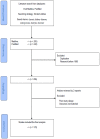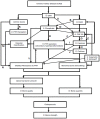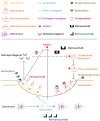Osteoporosis in Patients with Chronic Kidney Diseases: A Systemic Review
- PMID: 32961953
- PMCID: PMC7555655
- DOI: 10.3390/ijms21186846
Osteoporosis in Patients with Chronic Kidney Diseases: A Systemic Review
Abstract
Chronic kidney disease (CKD) is associated with the development of mineral bone disorder (MBD), osteoporosis, and fragility fractures. Among CKD patients, adynamic bone disease or low bone turnover is the most common type of renal osteodystrophy. The consequences of CKD-MBD include increased fracture risk, greater morbidity, and mortality. Thus, the goal is to prevent the occurrences of fractures by means of alleviating CKD-induced MBD and treating subsequent osteoporosis. Changes in mineral and humoral metabolism as well as bone structure develop early in the course of CKD. CKD-MBD includes abnormalities of calcium, phosphorus, PTH, and/or vitamin D; abnormalities in bone turnover, mineralization, volume, linear growth, or strength; and/or vascular or other soft tissue calcification. In patients with CKD-MBD, using either DXA or FRAX to screen fracture risk should be considered. Biomarkers such as bALP and iPTH may assist to assess bone turnover. Before initiating an antiresorptive or anabolic agent to treat osteoporosis in CKD patients, lifestyle modifications, such as exercise, calcium, and vitamin D supplementation, smoking cessation, and avoidance of excessive alcohol intake are important. Managing hyperphosphatemia and SHPT are also crucial. Understanding the complex pathogenesis of CKD-MBD is crucial in improving one's short- and long-term outcomes. Treatment strategies for CKD-associated osteoporosis should be patient-centered to determine the type of renal osteodystrophy. This review focuses on the mechanism, evaluation and management of patients with CKD-MBD. However, further studies are needed to explore more details regarding the underlying pathophysiology and to assess the safety and efficacy of agents for treating CKD-MBD.
Keywords: chronic kidney disease; dialysis; fracture; osteoporosis.
Conflict of interest statement
The authors declare no conflict of interest.
Figures



References
-
- Kidney Disease: Improving Global Outcomes (KDIGO) CKD-MBD Update Work Group KDIGO 2017 Clinical Practice Guideline Update for the Diagnosis, Evaluation, Prevention, and Treatment of Chronic Kidney Disease-Mineral and Bone Disorder (CKD-MBD) Kidney Int. Suppl. 2017;7:1–59. doi: 10.1016/j.kisu.2017.04.001. - DOI - PMC - PubMed
-
- Moe S., Drueke T., Cunningham J., Goodman W., Martin K., Olgaard K., Ott S., Sprague S., Lameire N., Eknoyan G., et al. Definition, evaluation, and classification of renal osteodystrophy: A position statement from Kidney Disease: Improving Global Outcomes (KDIGO) Kidney Int. 2006;69:1945–1953. doi: 10.1038/sj.ki.5000414. - DOI - PubMed
-
- Najar M.S., Mir M.M., Muzamil M. Prevalence of osteoporosis in patients with chronic kidney disease (stages 3–5) in comparison with age- and sex-matched controls: A study from Kashmir Valley Tertiary Care Center. Saudi J. Kidney Dis. Transplant. 2017;28:538–544. - PubMed
Publication types
MeSH terms
Substances
Grants and funding
LinkOut - more resources
Full Text Sources
Medical

